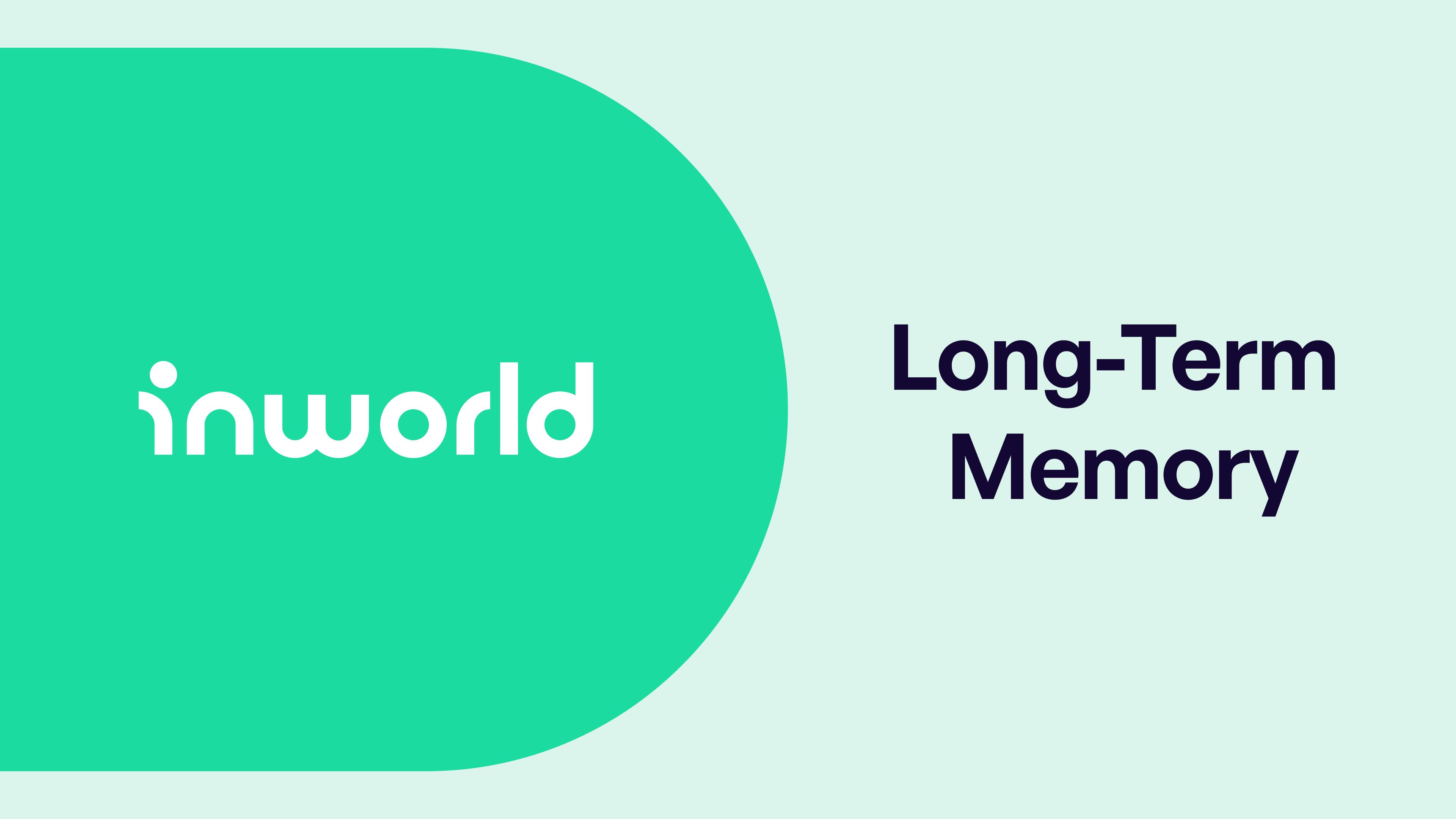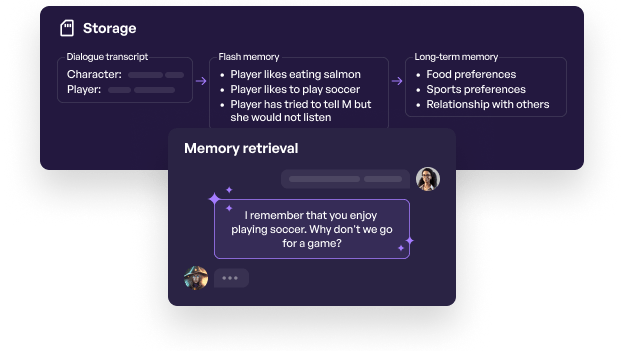Introducing Long-Term Memory

In video games, NPC memory is often limited to singular sessions and interactions. But, what if your in-game characters could remember notable information, draw upon past memories, and continue building rapport with players over multiple sessions?
Imagine characters that remember previous conversations and important details of things you told them and having that information drive your conversations with them. Introducing Inworld’s Long-Term Memory, a feature that allows characters to maintain long-term coherence in interactions.
Long-Term Memory allows Inworld characters to:
- Establish memory of all notable information throughout the course of conversing with a player throughout many sessions over time.
- Resolve contradictions and duplications in their long-term memory. Memory is not simply a list of items logged each time a session happens, but more of a synthesized and organized structure that evolves over time.
- Draw upon past memories to form dialogue (only when relevant to the conversation)
How does it work?
Our Long-Term Memory feature creates a memory of all notable information shared during character and player dialogue over multiple play sessions. Notable pieces of information could include a player’s preferences, their relationship to others, the player’s observations, or daily activities they mentioned.
Characters have 2 types of memory storage; flash memory and long-term memory. Flash memory stores information in sequential order across multiple sessions, whereas long-term memory synthesizes flash memory after multiple mentions of a specific topic.
This feature can be enabled for Enterprise plan users.

How this fits into our Character Brain
Long-Term Memory is part of the Inworld Character Brain. Our Character Brain is one of the three main layers of our product. Its focus is on the character's personality with the goal of heightening immersion and establishing deeper connections with a character.
Inworld’s AI characters use 30+ multimodal AI models to replicate comprehensive human interaction, encompassing both spoken and unspoken forms of communication. This includes vocalizations, body movements, facial expressions, and gestures.
Our Character Brain includes these key features:
- Personality
- Emotions
- Real-Time Voices
- Goals and Actions
- Long-Term Memory
